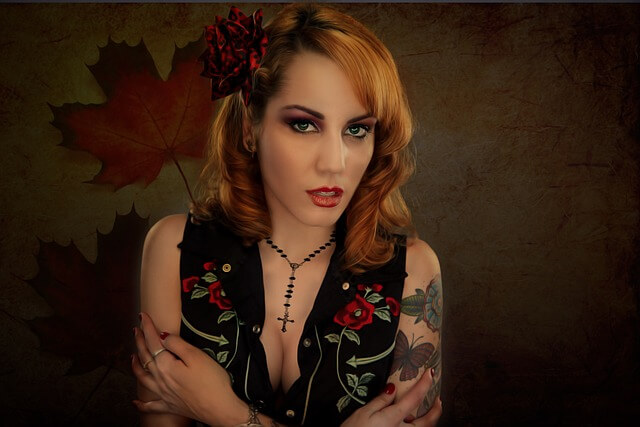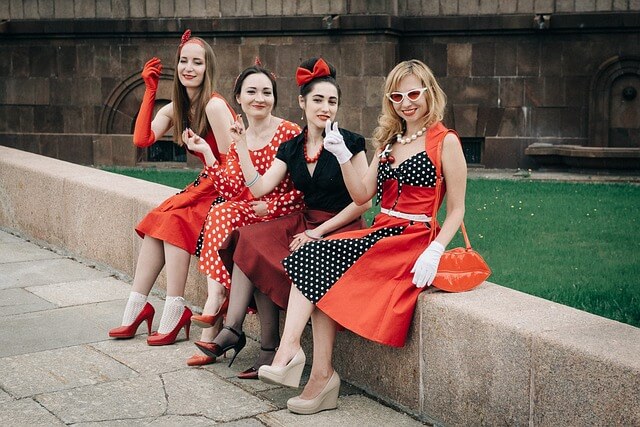
Vintage clothing has a certain charm and appeal that transcends time. From flapper dresses of the 1920s to bell-bottoms of the 1970s, vintage fashion has continued to inspire and influence modern styles.
While fashion trends come and go, vintage clothing offers a unique and timeless appeal that has persisted through the decades.
In this blog post, we will explore the various reasons why vintage clothing remains popular and why it continues to hold a special place in the hearts of fashion enthusiasts and vintage lovers alike.
So, let’s dive into the world of vintage fashion and explore its timeless appeal.
Why do people love vintage clothing?
Fashion is ever-changing, and what is in style today may be outdated tomorrow. However, there is a certain charm and appeal to vintage clothing that transcends time.
Vintage clothing is typically defined as clothing that is at least 20 years old, but it can also refer to clothing that is a product of a specific era or style.
One of the primary reasons why people love wearing vintage clothing is the uniqueness factor. Vintage pieces are often one-of-a-kind or limited edition, making them stand out from the crowd.
Vintage clothing also tends to be higher quality than contemporary fast fashion, as garments were often made with greater attention to detail and craftsmanship in the past. This means that vintage clothing can last longer and even be passed down as heirlooms.
Wearing vintage clothing is also a form of self-expression. By choosing to wear a particular vintage piece, you are making a statement about your personality, style, and taste. Vintage clothing offers a level of creativity and individuality that can be difficult to achieve with modern fashion.
Another reason why vintage clothing remains popular is the nostalgia factor. Wearing clothing from a bygone era can evoke feelings of nostalgia and transport us back in time. Vintage clothing can also connect us to our family history and culture. For example, wearing a vintage dress that belonged to your grandmother can be a way of honoring her memory and keeping her legacy alive.
Vintage clothing also has a positive impact on the environment. The fast fashion industry is notorious for its negative impact on the environment, with clothes being produced quickly and cheaply and often ending up in landfills. By choosing to wear vintage clothing, we are promoting sustainability by reducing waste and promoting reuse.
What is considered vintage clothing?

Vintage clothing is typically defined as clothing that is at least 20 years old, but it can also refer to clothing that is a product of a specific era or style.
The term “vintage” is often used to describe clothing from the 1920s through the 1980s, but it can also include clothing from earlier or later periods.
Vintage clothing is usually characterized by its unique and distinct style, quality materials, and attention to detail. Vintage clothing can include dresses, suits, coats, hats, shoes, bags, and accessories.
The value of vintage clothing depends on various factors, including its age, condition, rarity, and historical significance.
What are the different eras of vintage clothing and what are their distinctive styles?
Vintage clothing encompasses a wide range of styles and eras, each with its own distinctive characteristics. Here are some of the most popular eras of vintage clothing and their unique styles:
1920s – The 1920s were known for their flapper style, which featured short dresses with dropped waistlines, beaded embellishments, and fringe details. Cloche hats and T-strap heels were also popular during this era.
1930s – The 1930s saw a move towards more tailored and feminine styles, with dresses featuring bias cuts, nipped-in waists, and shoulder pads. The era is also known for its wide-leg pants, art deco jewelry, and fur-trimmed coats.
1940s – The 1940s were characterized by utility and simplicity due to the wartime rationing of materials. This era is known for its practical and modest styles, such as A-line dresses, high-waisted pants, and fitted blouses.
1950s – The 1950s saw a return to more feminine styles, with full-skirted dresses, fitted cardigans, and tailored suits. The era is also known for its use of bold prints, polka dots, and saddle shoes.
1960s – The 1960s were a time of experimentation and change, with mod styles featuring short hemlines, graphic prints, and bright colors. The era also saw the rise of the mini skirt, go-go boots, and shift dresses.
1970s – The 1970s were known for their bohemian and disco-inspired styles, featuring flowy maxi dresses, wide-leg pants, platform shoes, and colorful prints.
1980s – The 1980s were characterized by bold and colorful styles, with power suits, oversized blazers, and neon colors. The era also saw the rise of punk and new wave fashion, with studded leather jackets, ripped jeans, and band t-shirts.
Each era of vintage clothing has its own unique style and appeal, making it easy to find a vintage look that suits your personal taste and aesthetic.
How do I dress to look vintage?
If you want to dress to look vintage, there are a few key elements to keep in mind. Here are some tips to help you achieve a vintage look:
Choose clothing that is inspired by a specific era: If you want to achieve a vintage look, it’s helpful to choose clothing that is inspired by a specific era, such as the 1920s, 1950s, or 1970s. Look for clothing that features the signature styles and silhouettes of that era, such as flapper dresses, A-line skirts, or bell-bottom pants.
Incorporate vintage accessories: Vintage accessories can add an authentic touch to your vintage look. Look for vintage hats, scarves, jewelry, and bags that complement your outfit and the era you are trying to emulate.
Pay attention to details: Vintage clothing is often characterized by its attention to detail, so make sure to pay attention to the little things. Look for clothing with intricate stitching, unique buttons, and other decorative details that set it apart from modern clothing.
Choose quality fabrics: Vintage clothing was often made with high-quality fabrics that can last for decades. Look for clothing made with natural fibers like wool, silk, and cotton, and avoid synthetic fabrics.
Mix vintage and modern pieces: You don’t have to dress head-to-toe in vintage clothing to achieve a vintage look. Mix vintage and modern pieces to create a unique and modern take on vintage style.
Remember that the key to achieving a vintage look is to have fun and experiment with different styles and eras. With a little creativity and inspiration, you can create a vintage look that is all your own.
To Conclude the topic
In conclusion, vintage clothing has a timeless appeal that has persisted through the decades. It offers uniqueness, quality, and self-expression, as well as a connection to the past and a positive impact on the environment.
Whether you are a vintage clothing enthusiast or just appreciate the occasional retro look, there is no denying the charm and allure of vintage clothing.